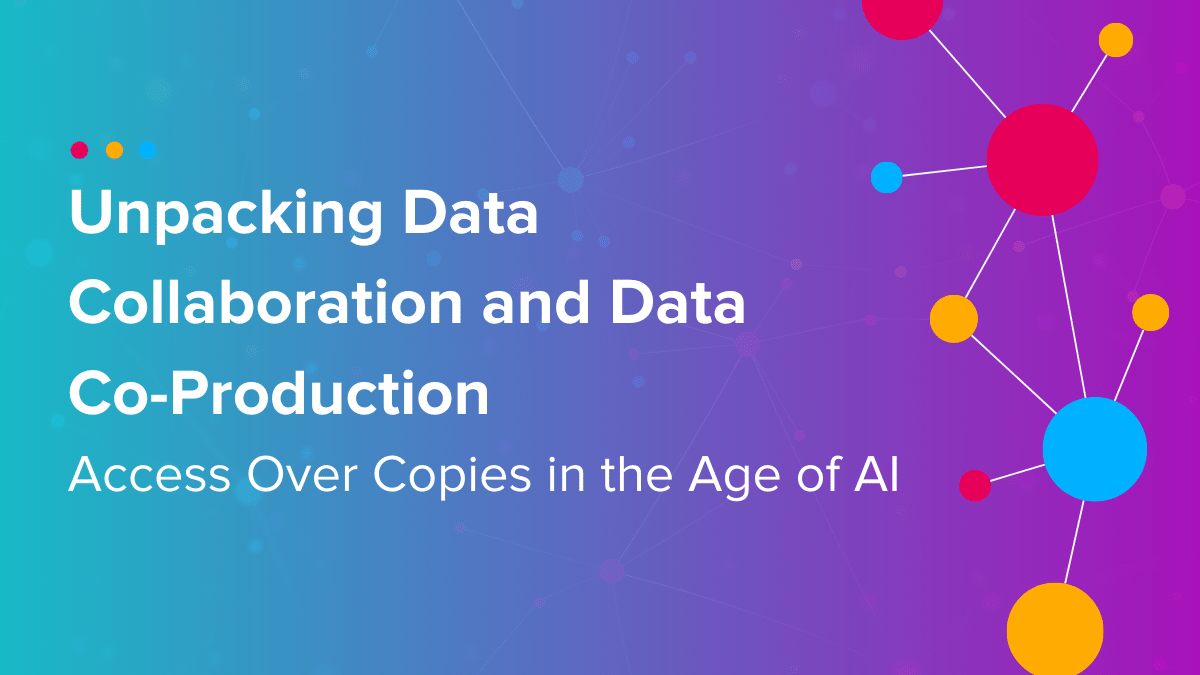The astounding impact of data collaboration
Cinchy CEO Dan DeMers talks about the company’s Series B funding and the incredible potential for harnessing human intelligence to solve the world’s biggest challenges
This week, we announced the completion of our Series B funding round which marks a critical milestone for Cinchy, and, given the challenging economic circumstances of post-COVID times, ticks a pretty big box for me as CEO.
Our round was led by the team at ForgePoint Capital who immediately recognized the massive potential for dataware platform technology to enable rapid digital innovation while advancing meaningful data privacy and security– a feat long considered impossible.
But today I wanted to take a few moments to share another side of this news, which is the way our technology impacts people.
Harnessing human centric-intelligence
We hear almost daily about the advances being made in machine intelligence, and for good reason - some remarkable achievements are being made with that technology.
But there’s another source of intelligence that seems to have taken a back seat of late, and that’s human-centric intelligence.
The reality is that teams, organizations, and societies have barely begun to scratch the surface of what human intelligence is capable of achieving.
A big reason for this is over 40 years of what I describe as the “app-centric” approach which has left human intelligence (often captured as data) scattered across hundreds or even thousands of apps, databases, and spreadsheets, inaccessible by most citizens and employees, incredibly expensive to build with, and next to impossible to meaningfully control due to endless copies.
Another way to describe the problem is that there's been no simple way for organizations to support collaborative intelligence or build new digital solutions in a way that does not exacerbate fragmented data or compromise data privacy rights. This fact holds true for data lake and data warehouse technologies which have enabled data scientists to analyze copies but done little to address the root cause problems that prevent true, widespread collaboration on data from happening.
I also think that most folks would agree that our goal as innovators and problem-solvers should not be to simply observe organizational intelligence, but to activate it by building new apps, systems, and automations that improve people's lives.
I hear some of you say “What about spreadsheets?” But the truth is that for all their utility, these are really just remote islands of data, disconnected from anything else, offering virtually no protection for any sensitive information they may contain.
Collaboration for the nation
What’s funny is that in recent years, collaboration technology has been popping up all over the place except on the data that is increasingly considered the lifeblood of organizations and touted (correctly) as the future innovation.
But just think... the new normal for writing business proposals is now to open a Google Doc with colleagues and collaborate on a single set of un-copied text in real-time while a spell-checker fixes typos, changes and versions are automatically saved, and role-based controls (e.g. editors, commenters, viewers) keep everything secure and properly governed.
This is exactly the same capability that Cinchy’s dataware technology brings to organizations who want to escape the vortex of proliferating data silos and fragmented intelligence and start to embrace the power of true data collaboration.
As someone who gets to witness the impact of this shift within our customers, partners, and employees, I can say that the benefits continue to astound me.
For example, it is with some pride that I watched as groups of credit unions joined forces within a dataware platform to co-build a COVID relief loan processing system in just 5 days in order to support their small business customers who were struggling in the early stages of the pandemic.
Closer to home, I have been amazed to see the progress made by two of our employees who started out as marketing interns and are now using dataware technology to build enterprise-grade digital solutions and fast-track their bold new futures as data-centric technologists.
These are just two examples of the types of outcomes I witness on an almost daily basis and they attest to what becomes possible when we shift from complex to simple, and embrace collaboration over fragmentation.
Change, one project at a time
I am also deeply encouraged by the activities of the Data Collaboration Alliance nonprofit (where Cinchy is a technology partner) which is doing excellent work to advance new standards like Zero-Copy Integration and supporting nonprofits and researchers in the application of data collaboration for the delivery of digital solutions for important causes.
As I reflect on the past few years and our recent funding news, I feel more inspired than ever to continue to support our employees, partners, and customers to explore data collaboration (the "what") and dataware technology (the "how") to tackle challenges they may have once felt insurmountable, and to deliver results with a level of speed, efficiency, and control that’s simply unprecedented.
Let’s face it, as employees and citizens of this beautiful planet, it's probably fair to say that we still have a few problems left to tackle.
Let's solve them collaboratively! 😀
Sincerely,
Dan DeMers
PS: if you want to help us accelerate this future I invite you to have a look at our open roles!
Share this
You May Also Like
These Related Stories

Introducing your Cinchy.tv Spring/Summer 2023 Program Line-Up

Unpacking Data Collaboration and Data Co-Production

